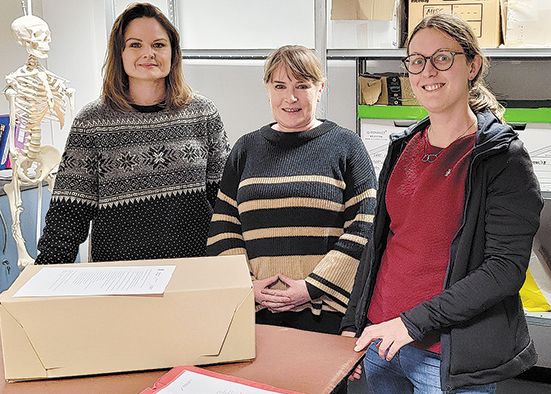Cremated bones from 1930s dig in Belfast university
Cremated bones from 1930s dig in Belfast university
31 January 2024

HUMAN remains thousands of years old, which were excavated from the site of a local historic monument, have returned to Northern Ireland thanks to the efforts of a Derryboye woman.
The cremated bones, which were taken from Ballynoe stone circle almost 90 years ago and stored in a Dutch museum, are now at Queen’s University Belfast.
They were brought there by Anna Moles, who is an assistant professor of Human Osteoarchaeology at the University of Groningen in the Netherlands.
The bones are believed to be taken from seven people, including a young child, and were removed during an excavation at Ballynoe in the 1930s by Professor Albert Egges van Giffen, a renowned Dutch archaeologist.
They were stored in the basement of the Groningen Institute of Archaeology where they lay until last last year.
Anna only learned that they came from Ballynoe in November when she received an email from Lisa White, a PhD researcher at Queen’s University, who had been trying to track down the bones in the hope of including them as part of her thesis.
“She had no idea I was from Northern Ireland, so this was all an amazing coincidence for us,” Anna remarked.
“I was able to track down the cremated bones and arranged for them to be repatriated to Northern Ireland.
“Just before Christmas, I took them to Queen’s University, where they were received by Lisa and Professor Eileen Murphy at the Department of Archaeology and Palaeoecology.”
Anna, who is 35, has been based at the University of Groningen for two-and-a-half years.
After attending primary school in Killinchy and Regent House in Newtownards, she studied archaeology at the University of St Andrews before going to complete her masters in Human Osteoarchaeology at the University of Edinburgh.
She lived and worked in Greece for some years, which included studying human remains from Knossos in Crete and did a PhD at University College in London.
When she returns home to visit her parents she often visits archaeological sites, including Ballynoe stone circle which is one of around 1,300 recorded stone circles in Britain, Ireland and Brittany.
They date from the late Neolithic era through the Early Bronze Age and were constructed from 3300 to 900 BC.
The original purpose for stone circles in unknown, but many archaeologists believe that they were used for multiple purposes, including burials, religious or ceremonial purposes, and community gatherings.
It has also been suggested that the stones were situated in relation to meaningful solar and lunar alignments.



